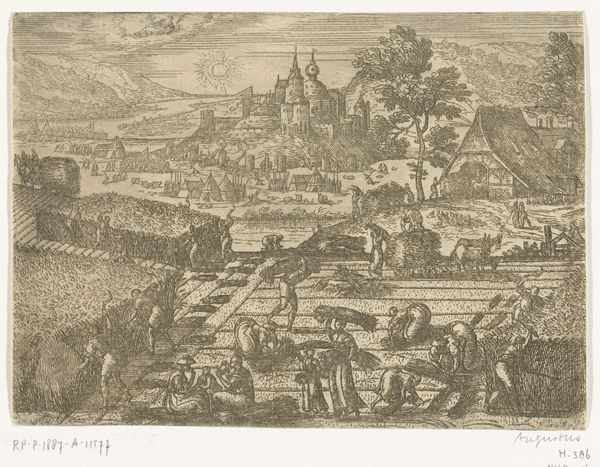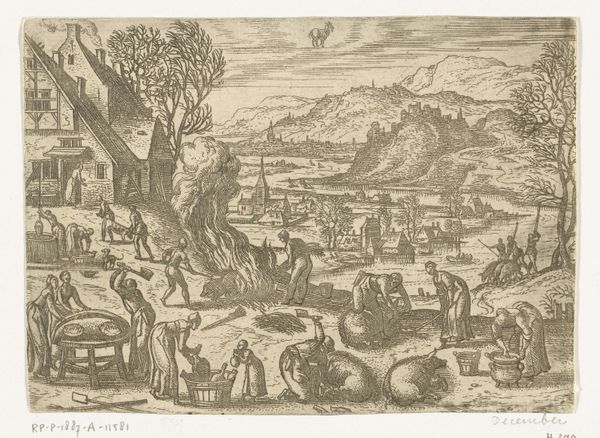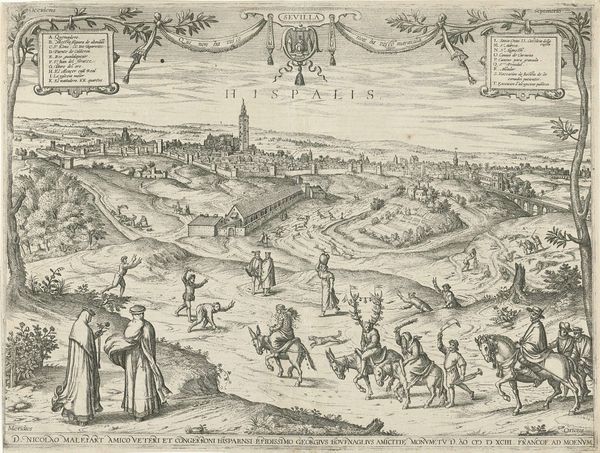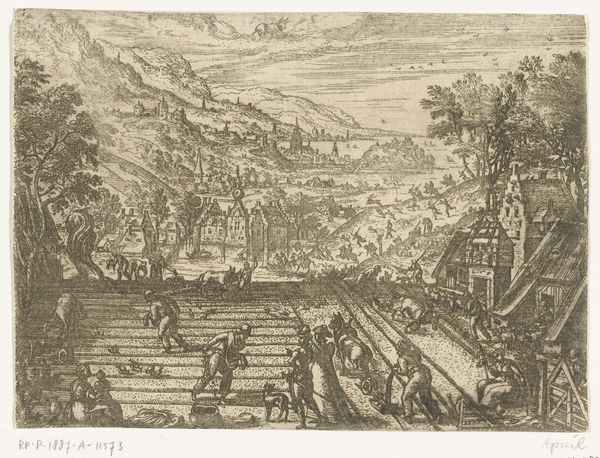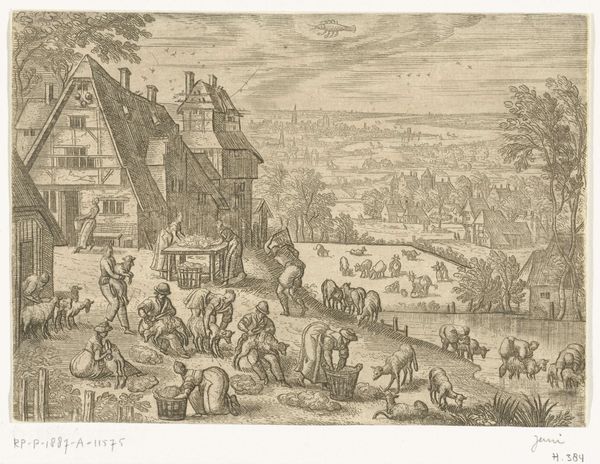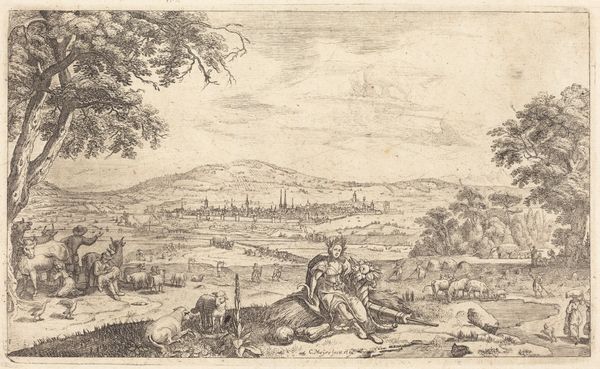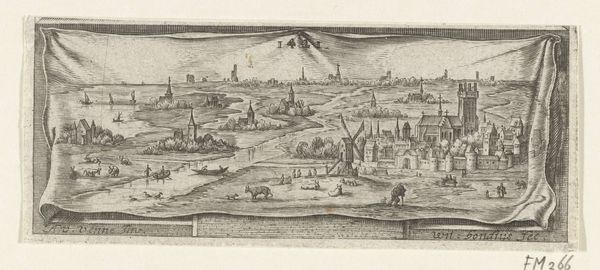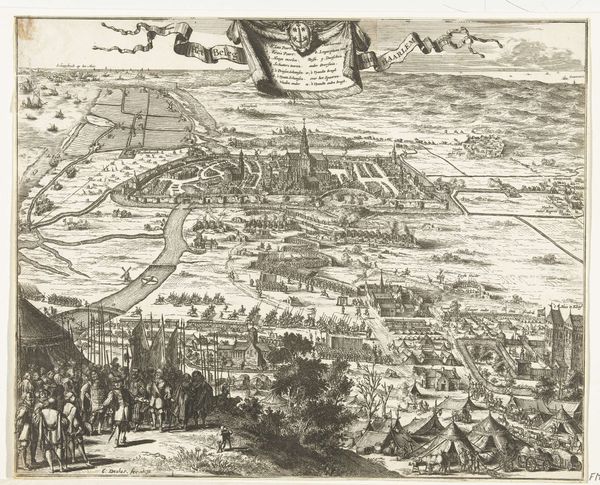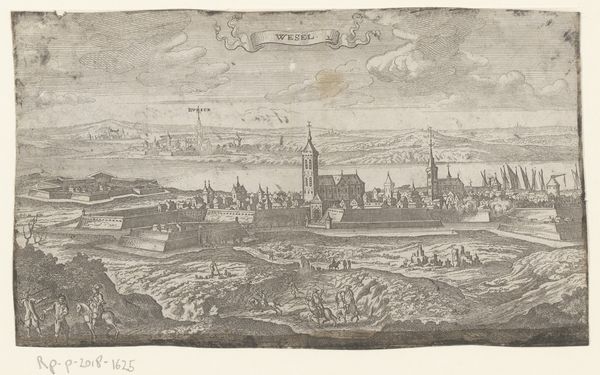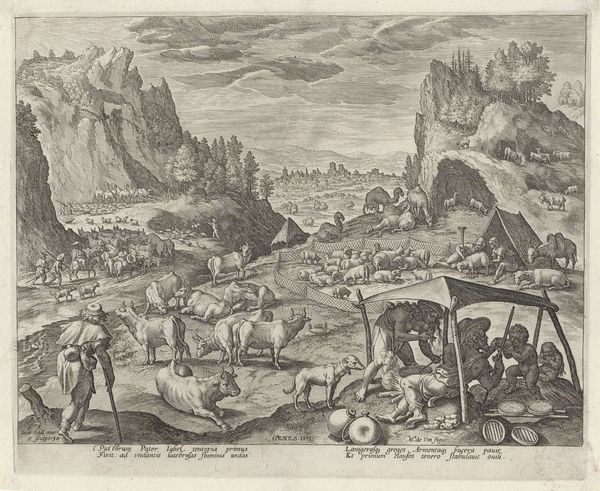
Dimensions: height 121 mm, width 165 mm
Copyright: Rijks Museum: Open Domain
Curator: This is "Juli," an etching by Pieter van der Borcht, made sometime between 1545 and 1608, currently held at the Rijksmuseum. Editor: The busyness of the scene really strikes me. All those figures and buildings fill the whole frame. How do you approach a work with so many visual elements? Curator: I look closely at how the artist organizes those elements. Notice how the artist utilizes horizontal registers to separate the foreground, midground, and background. This gives the artwork its structure. Semiotically, the field workers are the signs, in the sense of units of meaning in the foreground of this semiotic schema. Editor: I see what you mean about the structure. The horizontal bands separate activities in a cohesive manner. How do we assess Pieter van der Borcht's landscape style? Curator: Observe the balance. The city recedes, but is vital to understand this scene is cultivated, not wilderness. Are you noticing any rhythmic repetition of form and figure? Editor: Well, all the figures use similar tools in different postures to advance their work of harvesting crops, a pattern. But is it meant to underscore an ideological stance? Curator: Is it about something exterior or interior? Look at the composition again; ask yourself: Is it unified, balanced? Does the landscape feel contained or boundless? Focus on what’s visibly there, the orchestration of lines, forms, and tones within the pictorial field. It presents to us what must have been everyday reality. Editor: I guess by isolating form, repetition and tone, the structure hints at routine and hard work. Thank you, I learned to scrutinize forms without over interpretation. Curator: And I was reminded how semiotic and structuralist analyses give such descriptive power to art!
Comments
No comments
Be the first to comment and join the conversation on the ultimate creative platform.
